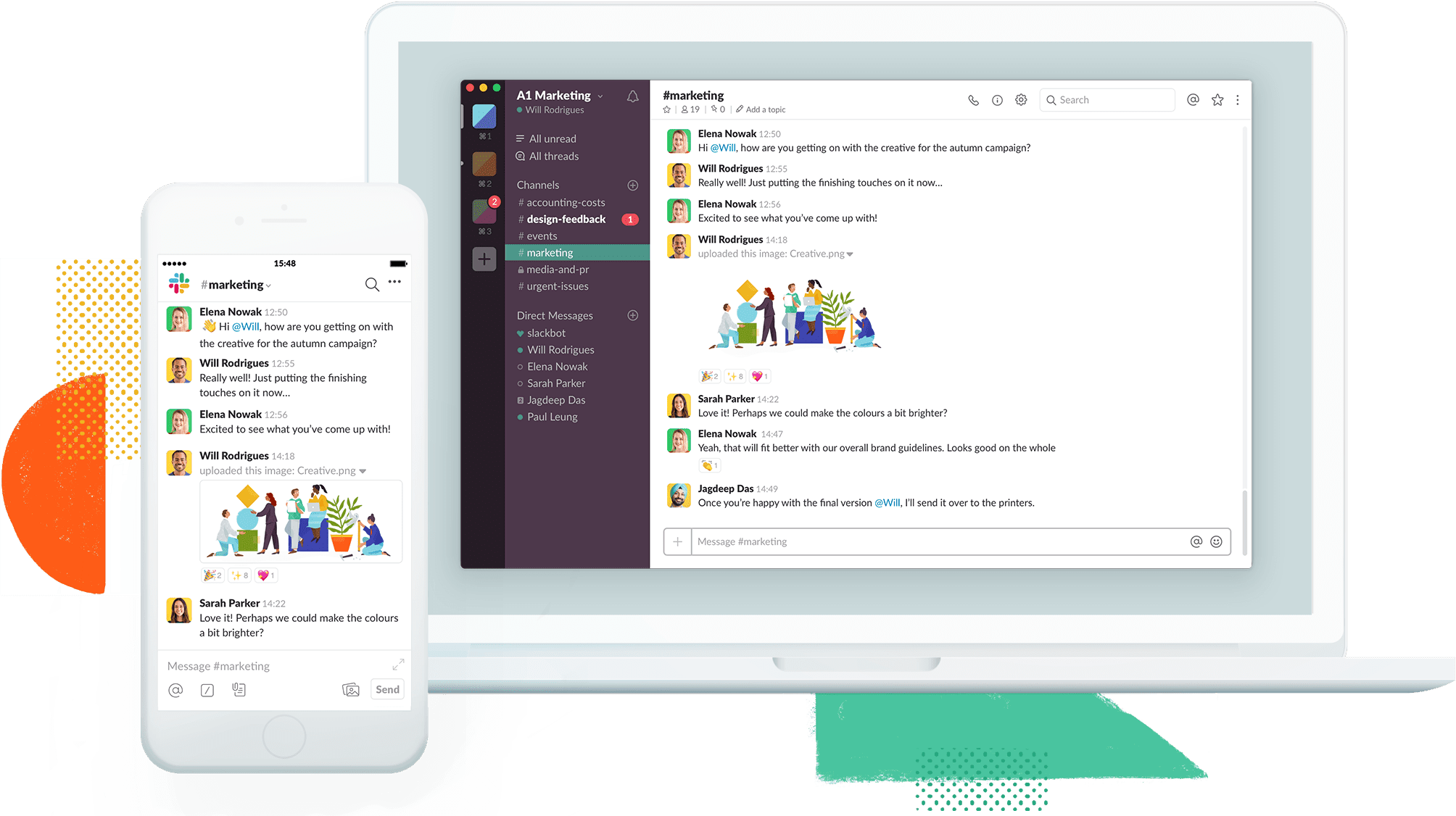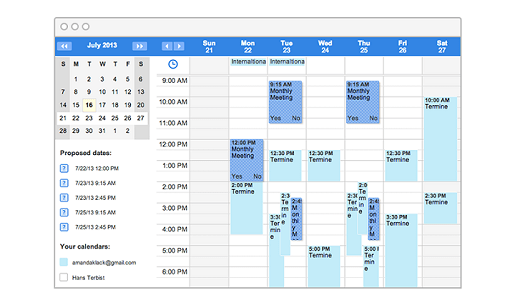Remote working has been on the rise for sometime now and is increasingly at the forefront of how companies are expected to enable flexibillity for their staff. More so, Covd19 has certainly forced the pace of change around remote working and workers are quickly adapting schedules, home offices and habits so that working from home (WFH) is both manageable but also productive. Remote working or working from home can bring up some challenges, however, it also opens up the possibility of creating positive changes and increased collaboration amongst teams. For those companies that have adopted remote working, already some of the benefits they would have been enjoying could include:
- Wages and services are often cheaper in other countries.
- Better talent is often available in other countries, too.
- Your business becomes more attractive to top talent.
- Having team members spread out across time zones can give your business a 24/7 presence.
- Gain cultural insights and different perspectives.
- Expand your business presence and make connections in other markets.
Top 10 remote tools for distributed teams
In this article, we’re looking specifically at the best tools for distributed remote teams. Just to be clear, this means team members are scattered across locations, possibly in different countries and time zones across the world. This comes with a number of unique challenges compared to managing (or being part of) a remote team working in the same area or country:- Time zones
- Language barriers
- Cultural differences
- Religious holidays, annual events, etc.
- Varied workplace cultures
- Differences in minimum/acceptable wages
- Differences in workers rights
- Technological differences (internet speed, coverage, access to websites, etc.)
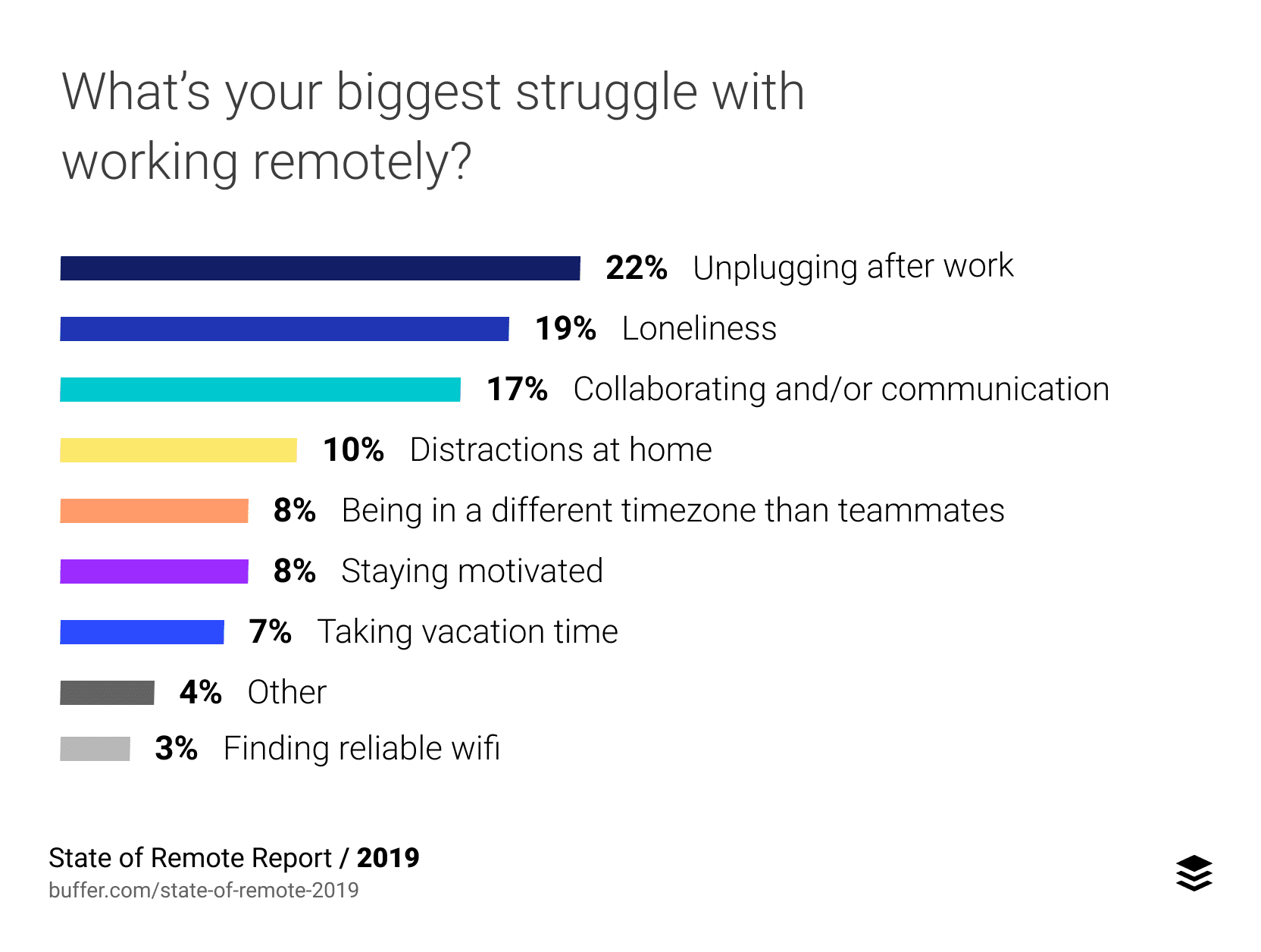 The recommendations I’m making in this article are aimed at solving the unique problems distributed teams face as well as the regular challenges of remote working for teams and individuals. Here at Venture Harbour, we have remote team members in the UK and countries all over the world so we’ve had to overcome all of these challenges – and this why I’m confident in making these recommendations.Note: I’m one of these remote workers and I spend the vast majority of my time outside of the UK, where I was born.Now that I’ve clarified exactly what we’ll be looking at in this article, here’s a quick summary of the 10 remote work tools for distributed teams that we’ll be talking about and which problem(s) they’ll solve:
The recommendations I’m making in this article are aimed at solving the unique problems distributed teams face as well as the regular challenges of remote working for teams and individuals. Here at Venture Harbour, we have remote team members in the UK and countries all over the world so we’ve had to overcome all of these challenges – and this why I’m confident in making these recommendations.Note: I’m one of these remote workers and I spend the vast majority of my time outside of the UK, where I was born.Now that I’ve clarified exactly what we’ll be looking at in this article, here’s a quick summary of the 10 remote work tools for distributed teams that we’ll be talking about and which problem(s) they’ll solve:- Serene: To cut out distractions, stay focused on the task at hand and get things done faster.
- Status Hero: Allow every team member to see what each other are currently working on to avoid interruptions and timewasting.
- Toggl: A time tracking tool for individuals and teams.
- Slack: A team communication tool to make individual and collaboration work easier.
- monday: A project management tool for team managers and individual team members to complete tasks and entire projects faster.
- Google Drive: Free file creation, sharing and collaboration for basic document types (text files, spreadsheets, presentations, etc.)
- InVision: A collaborative design prototype tool to turn concepts into reality faster.
- Spark: A distraction-free, collaborative email experience to keep teams focused and help them complete tasks quicker.
- Doodle: Team scheduling for meetings, video calls and joint sessions without the hassle.
- Zoom: Video conferencing, the way it should be for distributed teams.
#1: Serene (Mac)
FreeSerene is a free productivity tool for remote workers and teams. The app helps individual team workers maximise efficiency by focusing on one goal per day rather than dividing their attention. Numerous studies show that multitasking kills productivity and this is the key design principle behind Serene. The app’s tagline says it all: “Multi-tasking is a myth. Single-tasking is a superpower.”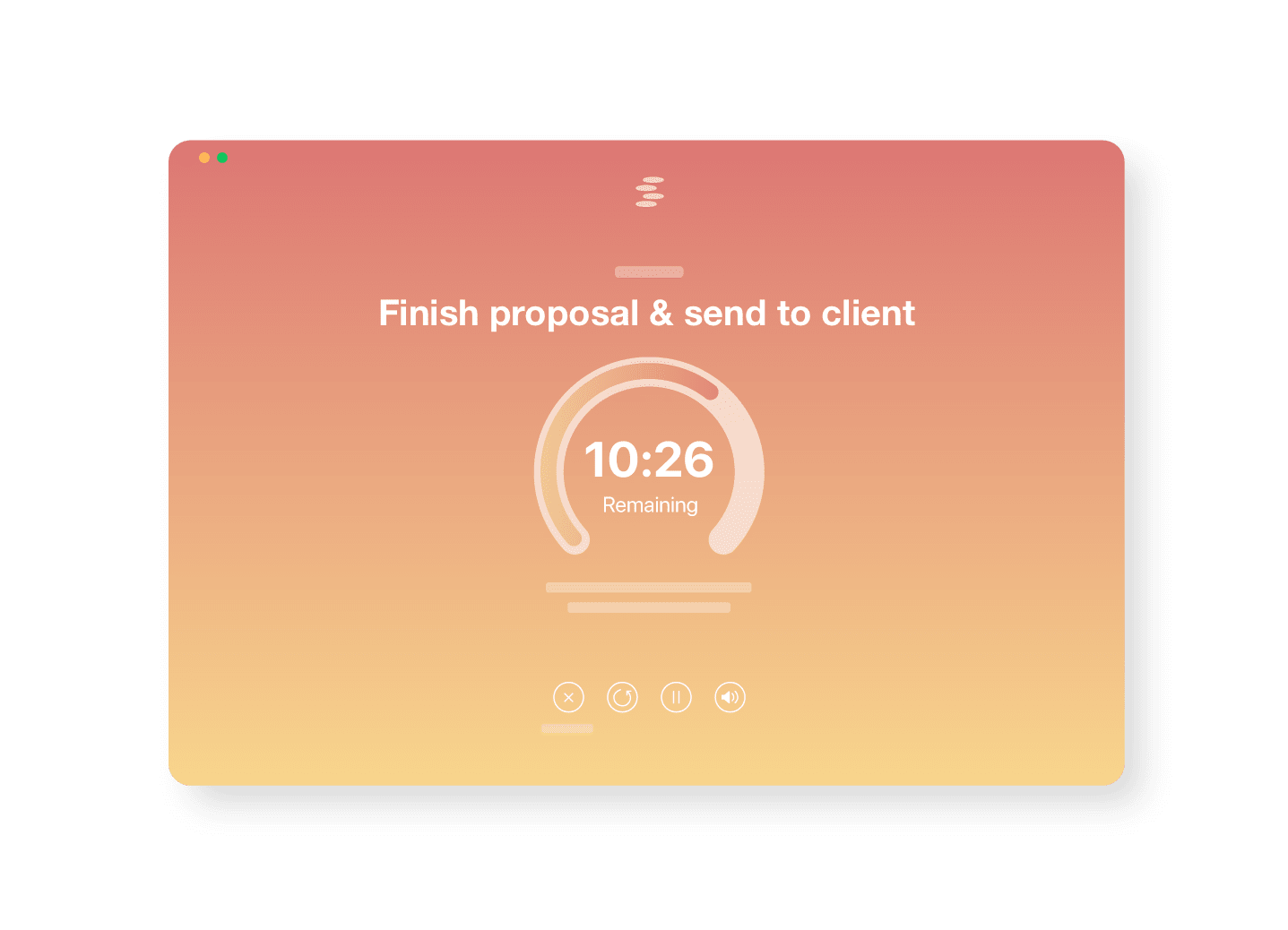
Key features
- Website blocker: Block websites that distract you, such as social media and news websites.
- App blocker: You can also block apps that take your attention away from work – social apps, your email app and anything else getting in the way.
- Distraction-free sessions: Work in 20-60 minute sessions with regular breaks to maximise productivity.
- Session timer: Shows you how much time you have left to complete tasks, giving you a motivation boost towards the end of each session.
- To-do lists: Manage tasks and make sure everything gets done by the right team member.
- Day planner: Define your goal for the day, set your tasks and get stuff done.
- Focus music: Play background music to help you keep your focus.
- Phone silencer: Automatically put your phone on silent mobile while working to avoid unnecessary distractions.
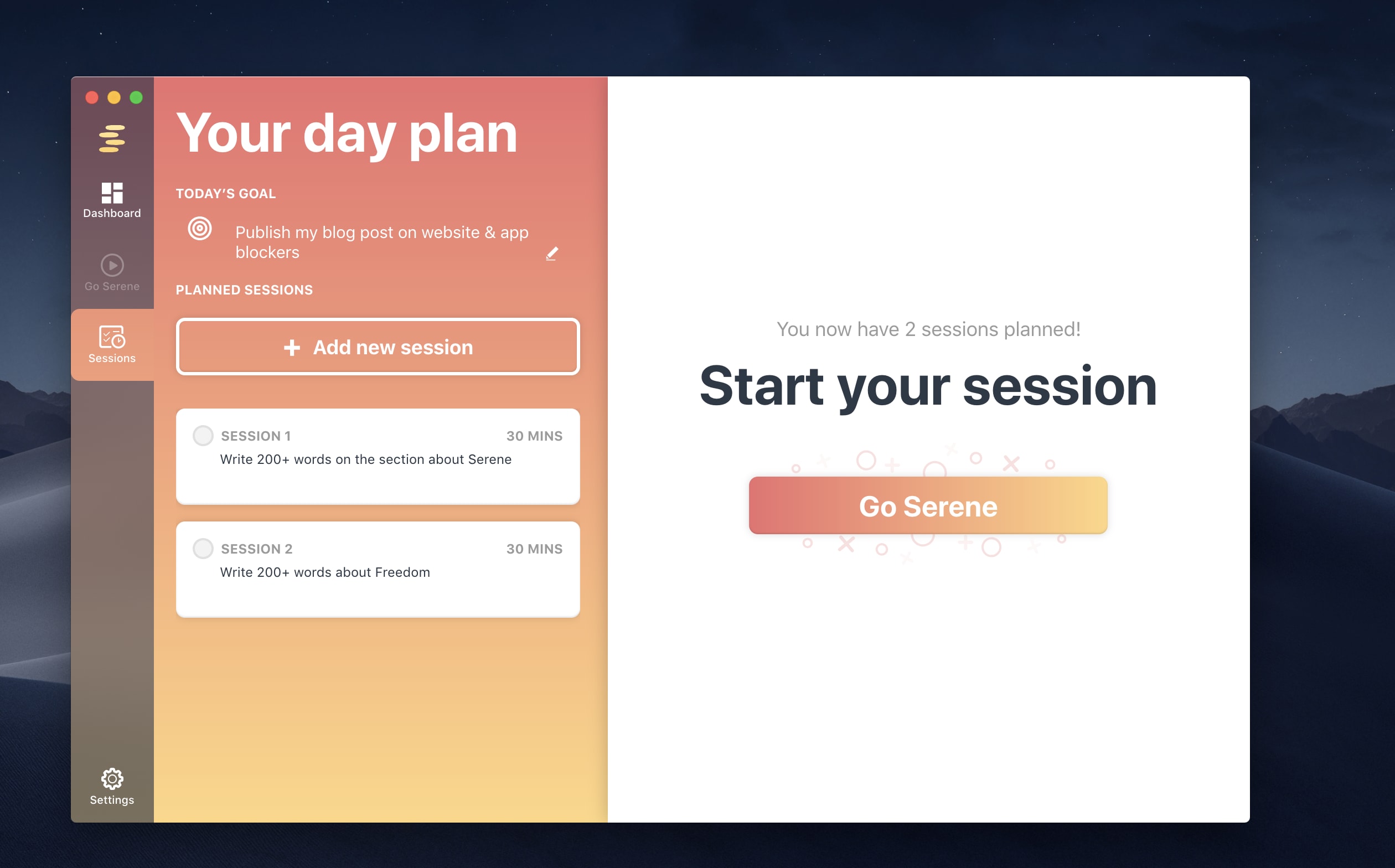
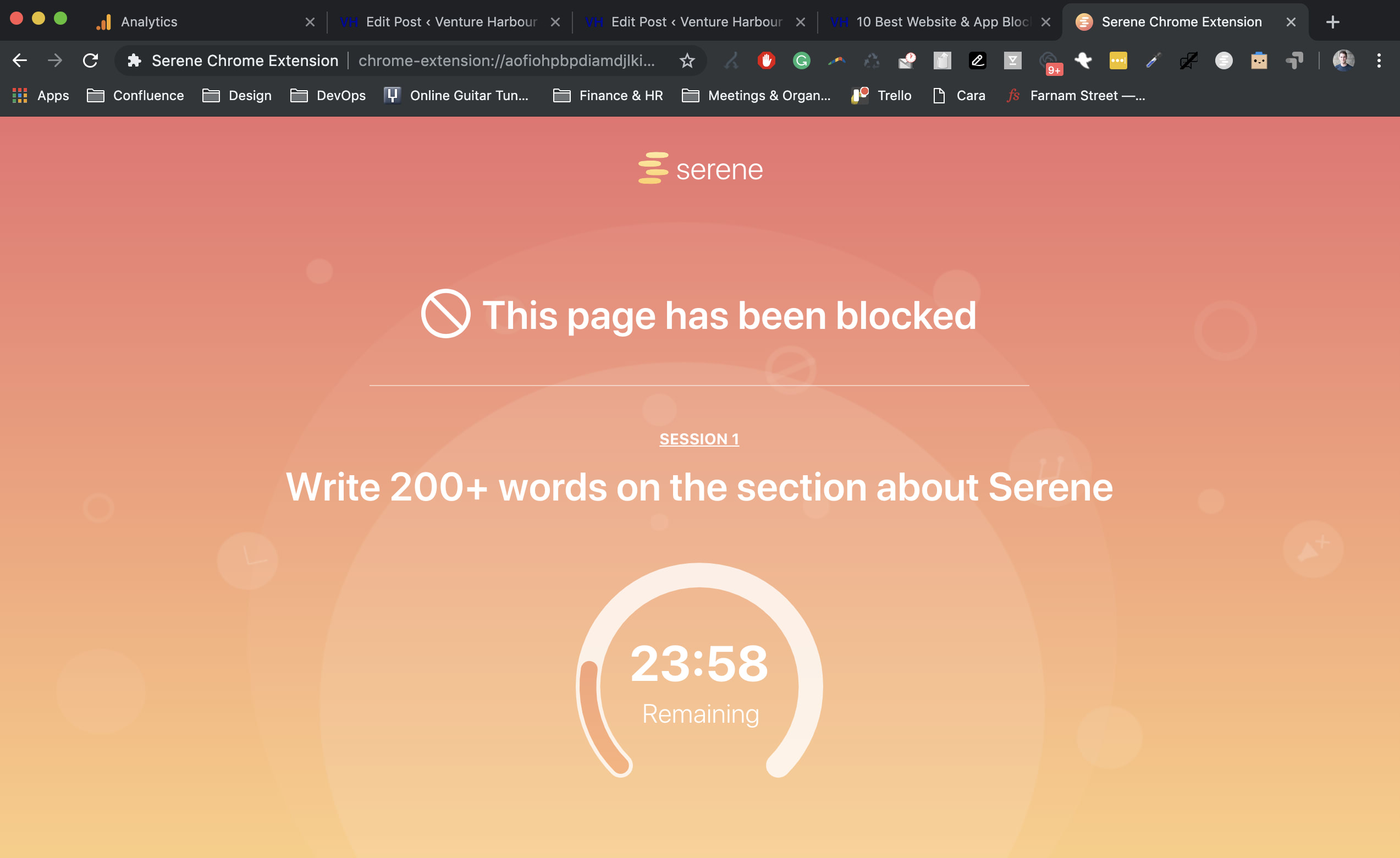
#2: Status Hero (Windows, Mac, web app)
Prices start from $3/month per user
If you’ve ever managed or worked as part of a remote team, you’ll understand the importance of statuses. Allowing team members to set statuses like “available,” “busy,” “away” and “unavailable” is crucial. Otherwise, you can team members interrupting each others’ workflow and notifications constantly popping up at inconvenient moments. This is the basic, yet invaluable role of statuses on collaboration software and Status Hero turns this concept into a major productivity tool.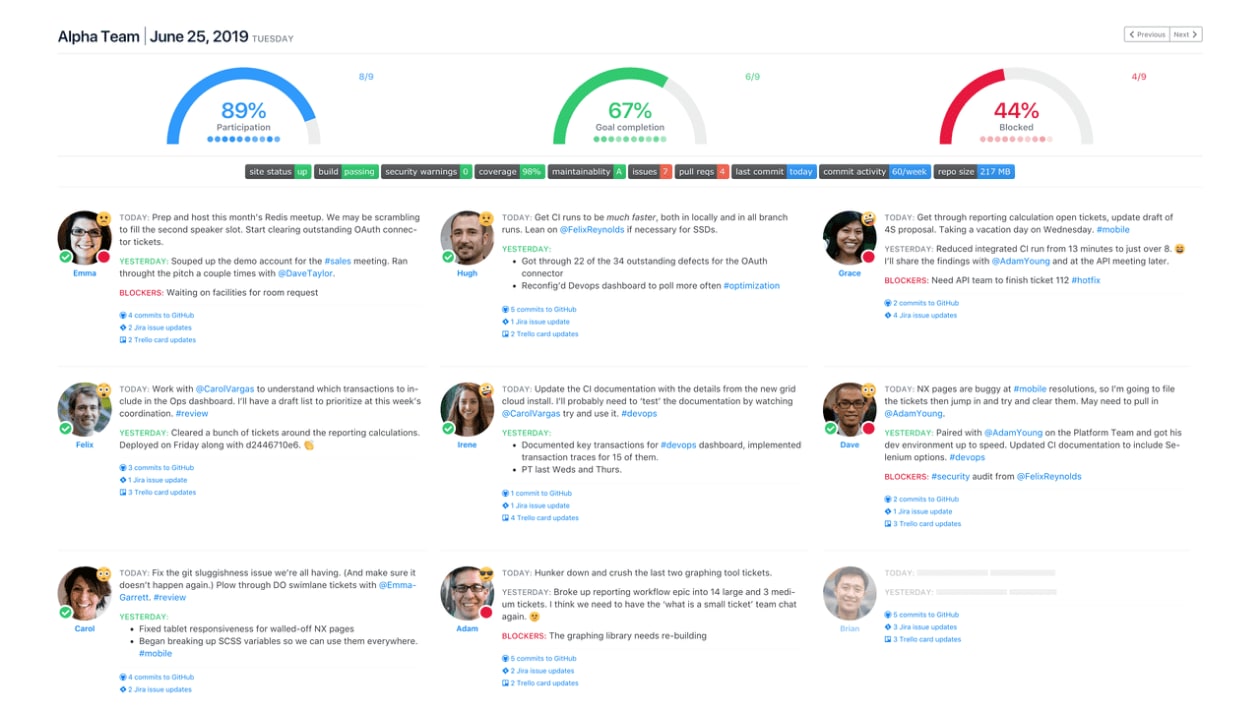
Key features
- Availability statuses: Users can set their availability status for every other team member and manager to see.
- Check-ins: Users provide a quick description of what they’re up to so nobody needs to ask what they’re currently working on.
- Time zones: Status Hero detects user time zones (these can also be user-defined) to help team members collaborate in different geographical locations.
- Blockers: Team members can state any issues getting in the way of completing tasks.
- Project management: Managers and team members can see how many goals are completed and how many targets are being blocked, in real-time.
- Multiple teams: You can divide teams into multiple groups, assign projects to different teams and switch between them on the fly.
- Mood tracking: Get a better sense of the emotional state of team members.
- Observer mode: For managers and stakeholders to view progress without interrupting team members’ workflows.
#3: Toggl (Windows, Mac, iOS, Android, Chrome, Firefox)
Premium version $18/monthper user
Toggl is a time tracking app that runs in the background while users work on tasks. Essentially, it’s designed to accurately track how long it takes to complete tasks and this was originally intended for freelancers to make sure they were invoicing accurately and getting paid fairly. Now, Toggl is a productivity app designed for teams and individual members to maximise productivity. Above all, its data visualisations help you compare profits against time spent on tasks and labour costs so you can see which projects and clients are most profitable.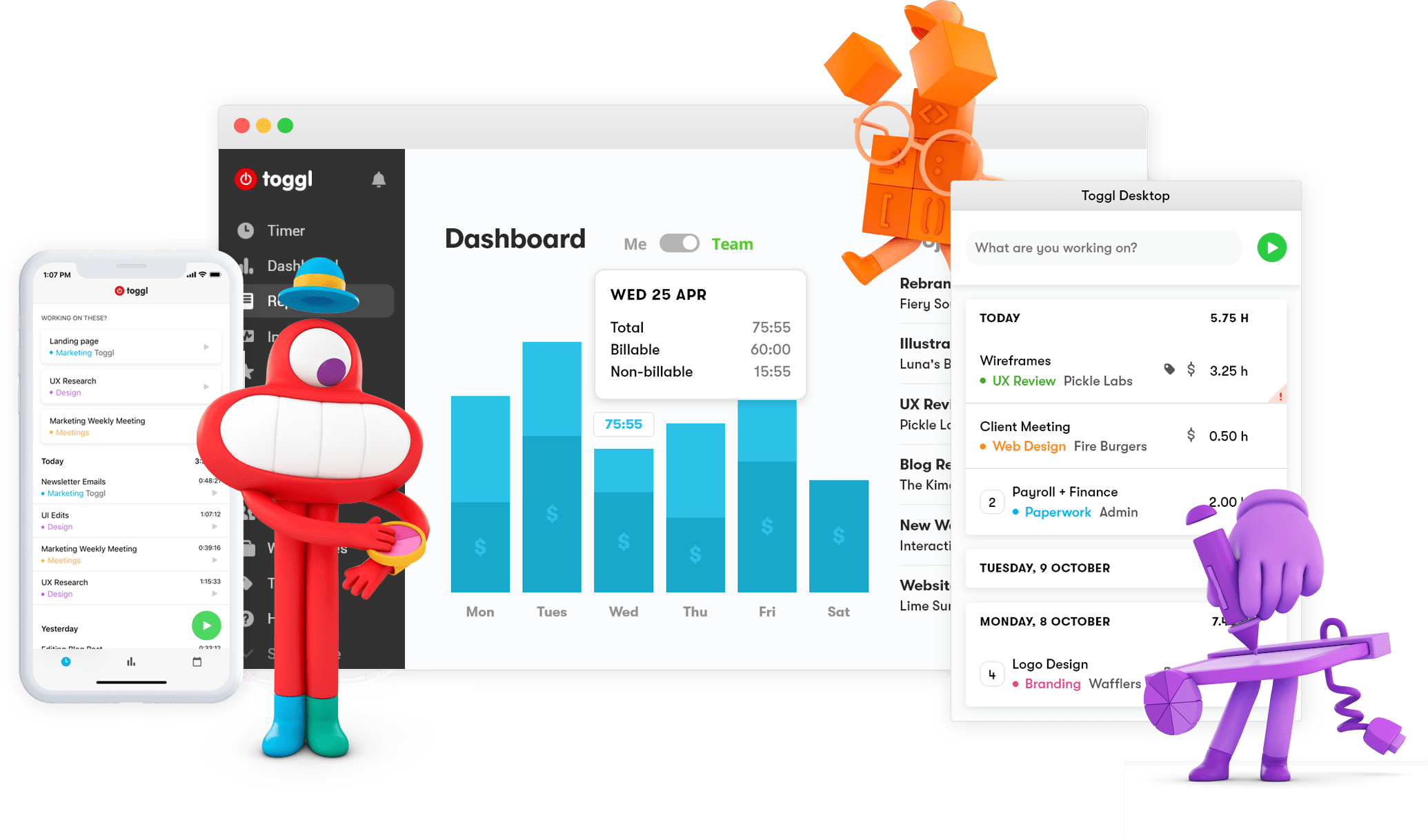
Key features
- Time tracking: See how much time you (or others) are taking to get things done.
- Boost profits: Check you’re charging enough for the time it takes to complete projects.
- Reports: See how productive you’re being and how profitable your time with Toggl reports.
- Cross-platform: Toggl’s wonderfully designed apps work across just about every operating system and online so you can access it wherever you need, whenever you need it.
You can also see how much time team members are spending on individual tasks to monitor productivity and see if anyone’s taking on too much/too little work.
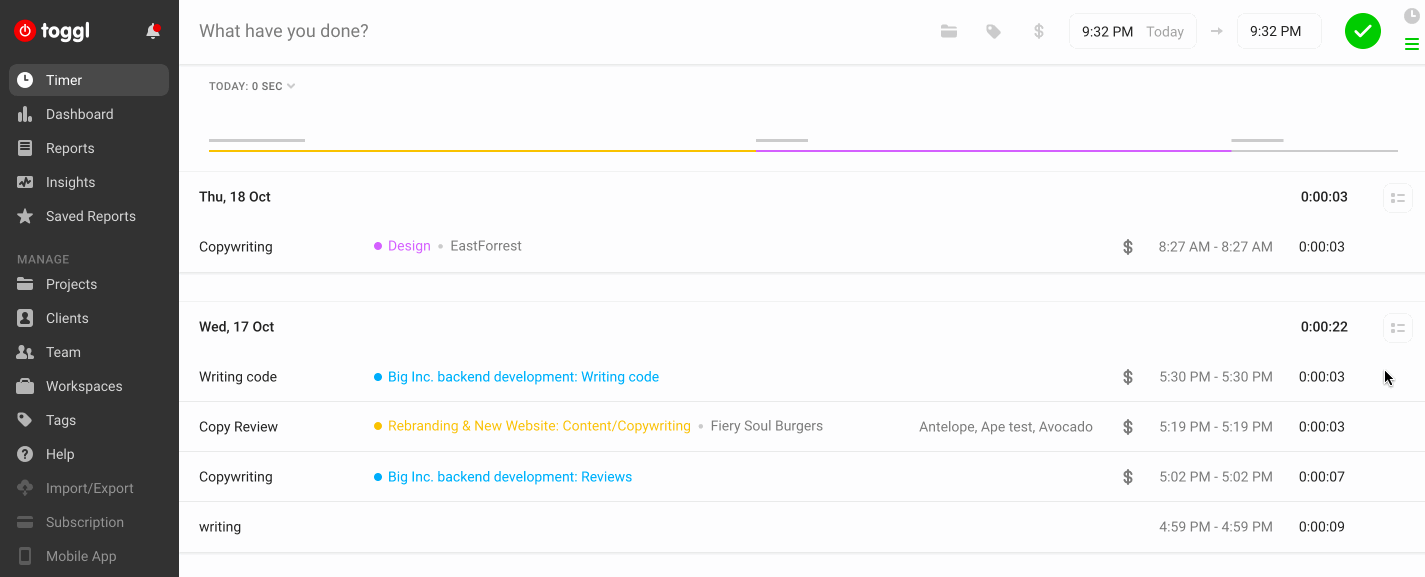 On the face of things, Toggl is about a simple as it gets in terms of productivity software but it can be an invaluable tool for making sure tasks are being completed quickly enough and that projects are generating enough revenue for the time (and other resources) being spent on them.
On the face of things, Toggl is about a simple as it gets in terms of productivity software but it can be an invaluable tool for making sure tasks are being completed quickly enough and that projects are generating enough revenue for the time (and other resources) being spent on them.#4: Slack (Windows, Mac, iOS, Android & web)
Free version, paid options start from £5.25/monthper user
Slack is the communication tool that brings remote teams together. The platform organises conversations into channels, which team members can join and leave, as needed, so nobody receives messages or notifications irrelevant to them. Conversations can also be had in threads, which keep messages outside of the main channel so chats don’t get in the way of main topics and projects.Key features
- Instant messaging: Live communication between every team member for seamless collaboration.
- Statuses: Users can set availability statuses to focus on individual tasks as needed.
- File sharing: Drag-and-drop file sharing for PDFs, images, videos and other common files types.
- Voice & video calls: Voice and video calls directly from within Slack.
- Screen sharing: Allows team members to show their work to others in real-time for stronger collaboration.
#5: monday (iOS, Android, web app)
Prices start from £15/month for 2 users, £34/month for 5 users
Again, there are plenty of project management tools designed for digital teams these days but monday offers a more advanced set of features than some of the better-known alternatives like Trello. A lot of project management tools essentially redesign the to-do list concept or create “Kanban” boards but the likes of monday and Asana have built fully-featured management platforms design for team leaders and members alike.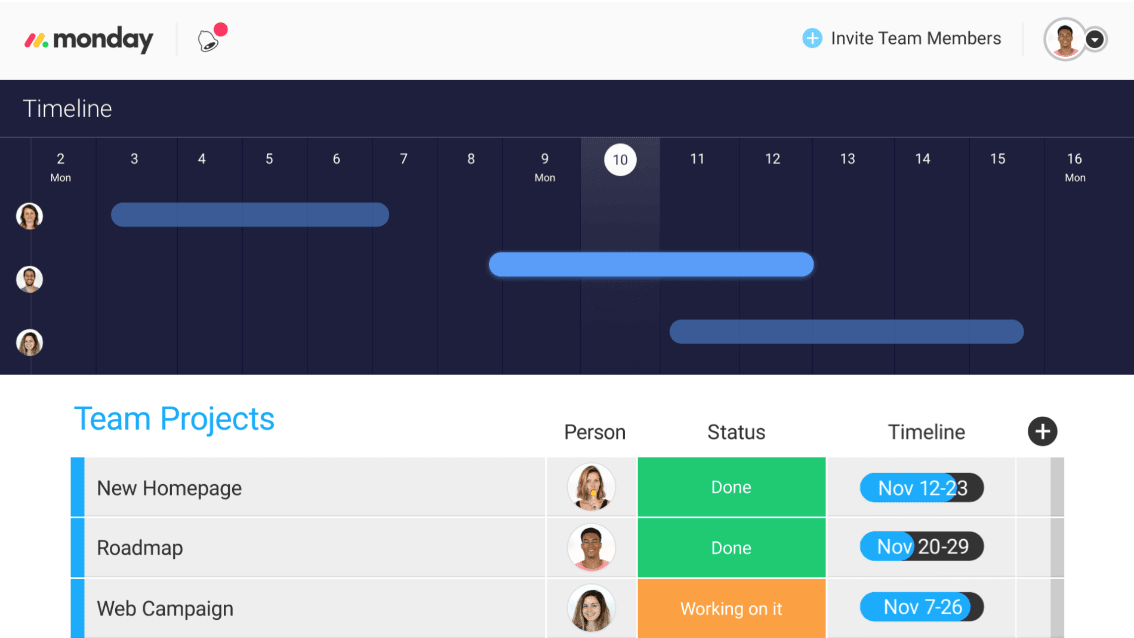
Key features
- Project management: monday is an advanced project management that helps large teams and individual team members hit more ambitious targets.
- Task management: Extensive task management tools that treat each task as building blocks to project goals.
- Views: Multiple views allow you to check project overviews, timelines, individual workflows, checklists and reports.
- Track progress: Track tasks, update statuses, receive notifications when deadlines are looming and reassign/prioritise tasks with ease.
- Weekly task loads: Team members can work on multiple projects without getting lost by using monday’s weekly overview.
- File sharing: Upload and share files so everyone has access to the resources they need via the same dashboard.
#6: Google Drive (Windows, Mac, iOS, Android & web)
Free
I probably don’t need to say a great deal about Google Drive; it’s that cloud alternative to Microsoft Office that simply works much better for remote and collaborative teams than the MS alternative suite of tools.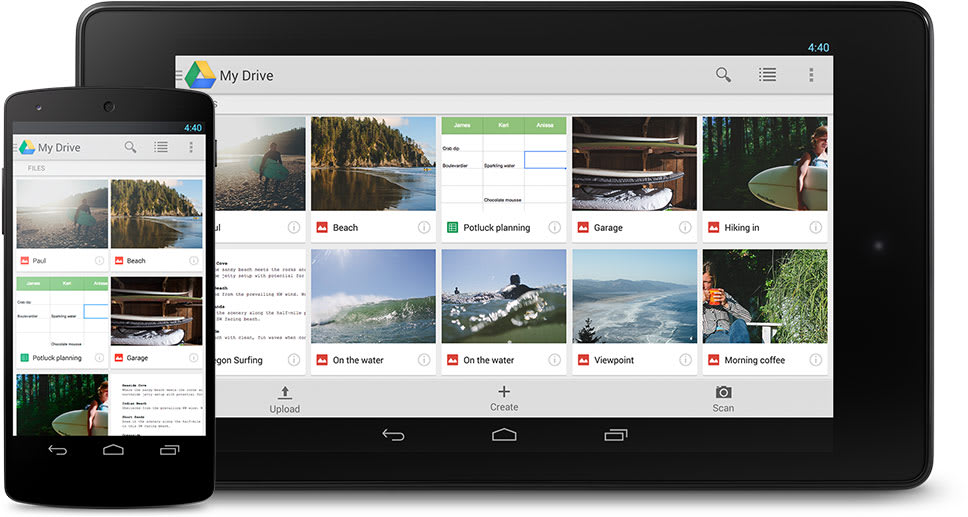
Key features
- Documents: Word documents, spreadsheets, presentations and all of the essential docs we take for granted these days – for free.
- Cloud storage: The cloud element of Google Drive is what makes it so useful for remote teams, allowing them to create, upload, share and collaborate on files.
- Collaboration: Real-time collaboration on Google Docs files works without any real lag getting in the way and this is where it really outshines Microsoft Drive.
#7: InVision (Windows, Mac, iOS, Android)
Free version available, Team version starts from $99/mo
I hesitated for a moment about including InVision in this article, as I want to stick to tools that every distributed remote team can make use of. I don’t want to get too niche in this article and list tools that are only relevant to certain teams but the truth is every business needs to take design seriously. Whether you’re redesigning your website, building a mobile app, developing your own software or creating a presentation with more flare than the average Powerpoint effort, InVision is the collaborative tool that helps design team get out of the concept stage faster.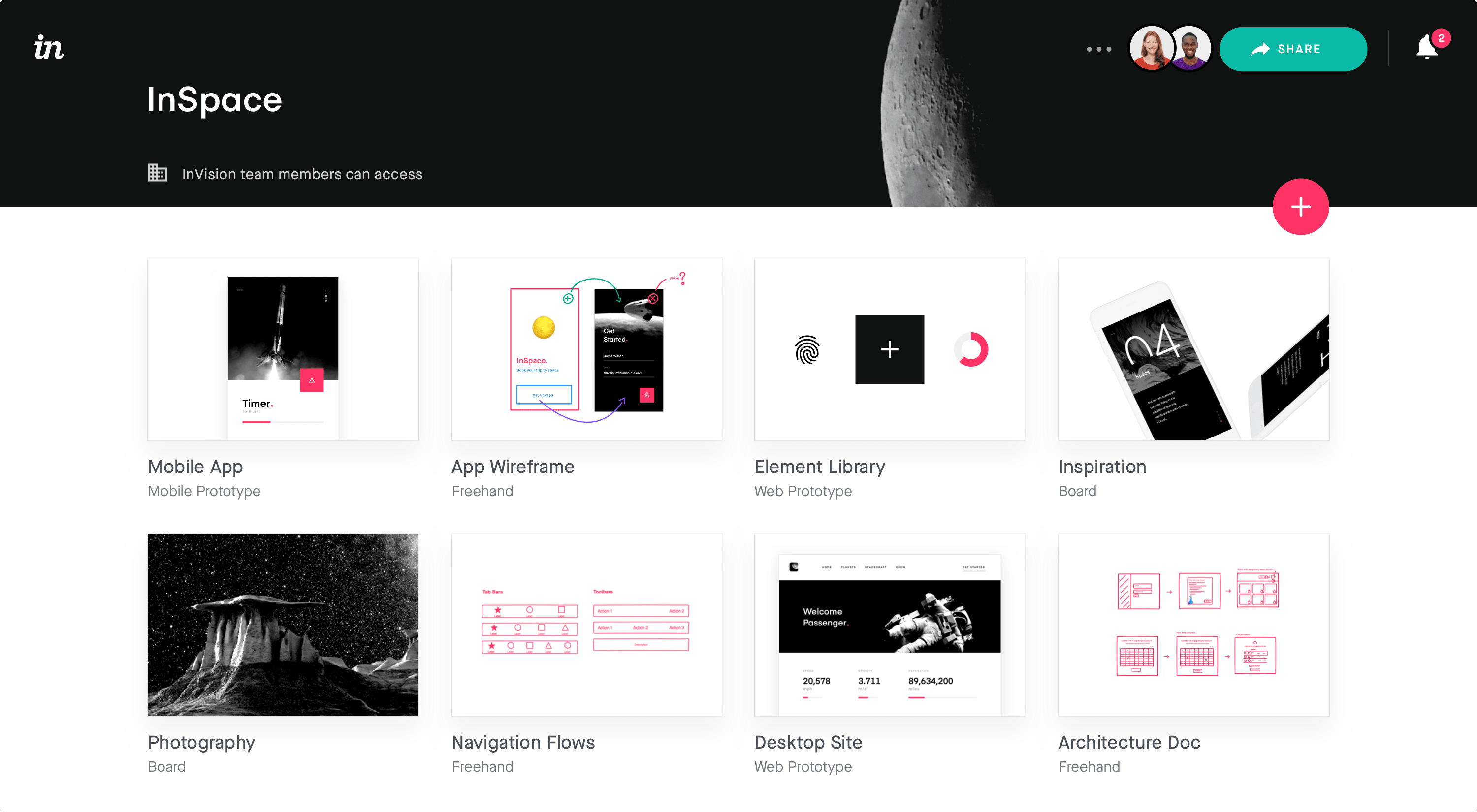
Key features
- Prototyping: Create interactive prototypes complete with working links, animations and effects so developers, clients and team members can see what the final product will look and feel like.
- Collaboration: From idea creation to file sharing and working on design files, InVision provides the collaborative tools remote designers need.
- Messaging: Team members can work on projects, exchange ideas and provide feedback on the work of others.
- Design management: Team leaders can manage projects and ongoing design processes.
- Integrated development: InVision creates a seamless design and development process where both teams can work together and collaborate as projects pass from one stage to the other.
#8: Spark (Mac, iOS, Android)
Free version, $6.39/mo (per user) for Premium
Spark is an intelligent email client that stops inboxes from being a productivity killer. Better yet, it turns them into an asset for distributed remote teams. Spark’s Smart Inbox automatically categorises your emails from every account and allows you to prioritise the emails that matter most while filtering out the ones that don’t.
Key features
- Smart inbox: Clean up your inbox, find any email with “Smart Search” and snooze emails that don’t need your attention right now.
- Smart notifications: Only receive notifications for the emails that really matter.
- Assign emails: Assign emails to team members so the right person is always managing tasks.
- Team email: Private team comments, shared drafts, template replies and instant chat for collaborative teams.
- Send emails later: Schedule emails to send them when people are most likely to read them.
- Reminders: Get reminders to follow up on important emails at the right time.
#9: Doodle (Web app)
Team packages start at €12.50/monthfor 5 users
Doodle is a collaborative scheduling app that makes it easy to arrange meetings without the email back-and-forths. It doesn’t matter how large your team is, how many time zones they’re spread across or how many teams your workforce comprises of – Doodle makes meetings happen. This is so important for remote teams distributed across different time zones.Key features
- Team scheduling: Arrange meetings, video calls and collaborative sessions without the email back-and-forths.
- Availability: Team members can set their hours of availability, which automatically adapts for time zones.
- Reminders: Set reminders so team members are always ready for meetings.
- Personal events: Keep private meetings, events and tasks hidden from team members so people only see the tasks they need to.
#10: Zoom (Windows, Mac, iOS, Android & web)
Free version available, paid versions from £11.99/monthper host
Zoom is a suite of video conferencing and communication tools designed for remote teams, virtual businesses conferences, webinars and other corporate purposes. We use Zoom for our virtual meetings, which we can use to run video and voice calls, but it’s capable of much more than this.Key features
- Video meetings: Remote teams can run video meetings and one-to-one video calls.
- Voice calls: You can also run group or one-to-one voice calls when face-to-face meetings aren’t necessary.
- Webinars: You can also use Zoom to host webinars.
- Messaging: Team members can send messages using Zoom.
- File sharing: Share files during and outside of video/voice chats for collaboration between members.

